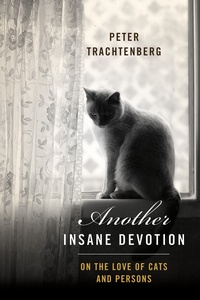THAT LIT, LIT LIFE (with global characteristics) 12 (of 14)
32 years away from the city of Melbourne and I return to find it in a different “Australia.” For one thing, all the restaurants downtown were Chinese, Japanese, Korean, Malaysian or otherwise distinctly “Asian.” Hidden somewhere down one street was a Greek restaurant, reminding me that 32 years ago, I had been startled to learn that Melbourne then had one of the largest Greek diasporic populations in the world.
It gave “Thanksgiving” a new meaning, because I am witness to a sea change that rationalizes my globally characterized life, one that used to feel out of kilter with life (never mind the lit, lit life).
I’m at the Nonfiction Now! 2012 Writers conference from the University of Iowa, transplanted this year to RMIT (Royal Melbourne Institute of Technology—the monarchy seems eternal despite this new Australian “face”). How do I get to RMIT, I asked Jose Dalisay, a keynoter from Manila, better known as “Butch” the Pinoy Penman—his chronicle of his Melbourne visit is much more informative about the city than mine. Easy, he says, look for the green hat.
Here it is, where most of the conference took place. In fact, Melbourne screams architects were here! with verve AND a viewpoint.
Meanwhile “Nonfiction” looks a lot like “Fiction” these days, replete with unreliable narrators, moveable points-of-view, a pointillist narrative (à la John Gardner’s Art of Fiction—see Chapter 6 “Plotting”) because at least in nonfiction, “collage” is all the rage.
Or so we partially heard in the conversation among the four keynoters, Jose Dalisay, Helen Garner, Margo Jeffries & David Shields, brilliantly moderated by Michael Cathart of ABC’s Radio National (that’s the Australian, not the American alphabet soup there) as they pondered “the art of truth.”
* * *
Is truth an art? It appears just about everything is art now if you say so and the critical heavyweights agrees. One truth of Melbourne, a city I used to visit in the late ’70’s, is that it has joined the global conversation of the multicultural, multidisciplinary, multiplexed multitude (at least among the literati) of our complicated, rule-and-genre-defiant 21st Century.
On my panel moderated by Mary Ann Mohanraj, we considered how the “margins” are centering.
The panel I moderated, Memoir & the Face Blanket (think the Chinese/Asian concept of “saving face” and Linus’ blanket in Peanuts), with Ira Sukrungruang, Patrick Madden, and Amanda Webster , brought diaspora, expatriation and genre defiance into the conversation of how we write memoir without overly sacrificing and scarifying our “real” selves.
Meanwhile I finally met the Chinese-Cambodian-Australian author-lawyer Alice Pung, of complicated hyphenation and lyric talent, in one of Melbourne’s famous lanes where sewage from homes used to be collected so that the main roads of the city could appear “civilized.” The lanes are where a plethora of restaurants and bars now reside.
* * *
Of what else did I avail myself? I wanted to know what coming home might mean for “Australians” (and this whole lit, lit time was spent in quote marks around those terms I thought I used to know with some certainty). Kent McCarter assembled a panel of “expatriate” or “exiled” writers in Australia from the anthology he co-edited with Ali Lemer of Joyful Strains: Expat Writers on Making Australia Home.
I left the book table with a copy and look forward to reading this. The anthology includes an introduction by Arnold Zable, a well-known Australian author whose work I only recently was privileged to discover in his latest book Violin Lessons. It is a lesson in truth and words, a sensual feast, an illuminating travelogue through memory and space.
* * *
But Melbourne beckoned, with its tramways (superb public transport—U.S. city planners please note: they know how to do the people moving right in Melbourne), green urban spaces and eye-candy buildings of every era.
And ended up on the last night with the writers Desmond Barry from Wales and Leila Philip from the U.S. at the waterfront bar where Melbourne men once came to ogle at the “naughty lady” on the wall.
How quaint she seems now.
Before I go off to Sydney, to consider if “Australia” is really “Asia” (or so a certain White Paper declares), a word about Des’ and Leila’s books, which you should add to your list of must reads.
Des is probably the writer I’ve known the longest from this confab of the literati in Melbourne. We connect back through art, a mutual painter friend still resident in New Jersey, when we both were living in New York City’s surrounds. Time is good to our global lit, lit life and hopefully it won’t be too long before we reconnect in Hong Kong and Wales, where he is on the creative writing faculty at the University of Glamorgan, an institution which adopts the perfect short form for this media obsessed time we live in – GLAM.
* * *
See you next on December 4 when I ruminate on 32 years away from Sydney and Australia’s place in Asia with esteemed Australian novelist and writer Frank Moorhouse and celebrate the city with Gail Jones (whose recent novel Five Bells was featured in an earlier blog, and gave me a path back into the city I used to know).


